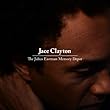 as Eastman too radical for the avant-garde? Was the Cage-Eastman argument the inevitable clash of a privileged self-erasing artist and an ambitious but rebellious self-asserting artist? Did Eastman betray himself by adopting the destructive and distracting, false, hateful, and self-indulgent racial and sexual identity politics of the time?
as Eastman too radical for the avant-garde? Was the Cage-Eastman argument the inevitable clash of a privileged self-erasing artist and an ambitious but rebellious self-asserting artist? Did Eastman betray himself by adopting the destructive and distracting, false, hateful, and self-indulgent racial and sexual identity politics of the time?
A review of Feydeau, First to Last by Georges Feydeau
 To many, the plays will evoke the world of Fawlty Towers; and it should come as no surprise, therefore, to learn that John Cleese has often expressed his admiration for Feydeau. It is interesting in this regard to look at Les Paves de l’ours from 1896, a play wherein an upper-class bachelor employs a country bumpkin as a man-servant, believing him to be ‘a diamond in the rough’.
To many, the plays will evoke the world of Fawlty Towers; and it should come as no surprise, therefore, to learn that John Cleese has often expressed his admiration for Feydeau. It is interesting in this regard to look at Les Paves de l’ours from 1896, a play wherein an upper-class bachelor employs a country bumpkin as a man-servant, believing him to be ‘a diamond in the rough’.
A review of the Little Book of Vintage Terror by Tim Pilcher
 But who could ever have believed that these bold, gaudy pictures, accompanying as they do such twisted, mendacious stories and fantasies, could ever do permanent harm to impressionable young minds? On the contrary they have a certain cute (now kitsch) charm and add spice to life!
But who could ever have believed that these bold, gaudy pictures, accompanying as they do such twisted, mendacious stories and fantasies, could ever do permanent harm to impressionable young minds? On the contrary they have a certain cute (now kitsch) charm and add spice to life!
An interview with Max Allan Collins
 The author of Seduction of the Innocent talks about his novel, his relationship with comics, the possibilities of the comic medium, his thoughts on the 100 Bullets series, his first exposure to comics, and lots more.
The author of Seduction of the Innocent talks about his novel, his relationship with comics, the possibilities of the comic medium, his thoughts on the 100 Bullets series, his first exposure to comics, and lots more.
A review of Chess Is Child’s Play: Teaching Techniques That Work by Laura Sherman and Bill Kilpatrick
 The aim of this book is to enable adults to teach chess to children, and in this it succeeds admirably. Although intended for one-to-one tuition (a mother teaching a son or daughter, say), the exercises and mini-games can quite easily be adapted for use in the classroom. And certainly the advice, insights and troubleshooting fixes are applicable to both contexts.
The aim of this book is to enable adults to teach chess to children, and in this it succeeds admirably. Although intended for one-to-one tuition (a mother teaching a son or daughter, say), the exercises and mini-games can quite easily be adapted for use in the classroom. And certainly the advice, insights and troubleshooting fixes are applicable to both contexts.
Lessons with a Grandmaster 2 by Boris Gulko and Dr. Joel R. Sneed
 Picturesque pyrotechnics can be seen in many games, notably in the draws with Shirov and Vaganian and the two titanic encounters (resulting in a draw and a win for Gulko) with Bronstein. There are also two wonderful miniatures where Renet and Lputian (strong grandmasters both) succumb quickly, the games clocking in at just 19 and 20 moves apiece.
Picturesque pyrotechnics can be seen in many games, notably in the draws with Shirov and Vaganian and the two titanic encounters (resulting in a draw and a win for Gulko) with Bronstein. There are also two wonderful miniatures where Renet and Lputian (strong grandmasters both) succumb quickly, the games clocking in at just 19 and 20 moves apiece.
A review of M. Duchamp & V. Halberstadt: Spiel im Spiel / A Game in a Game / Jeu dans le jeu by Ernst Strouhal
 Published in 1932, it is a book about those rare pawn endings where the distant opposition and the theory of coordinate squares plays a crucial role in determining the outcome. One can find helpful discussions of these sorts of positions in Pawn Endings, Maizelis and Averbakh’s classic text, and in one of Jon Speelman’s endgame books (I think, Endgame Preparation); and the Italian endgame theorist Rinaldo Bianchetti covered similar territory somewhat earlier.
Published in 1932, it is a book about those rare pawn endings where the distant opposition and the theory of coordinate squares plays a crucial role in determining the outcome. One can find helpful discussions of these sorts of positions in Pawn Endings, Maizelis and Averbakh’s classic text, and in one of Jon Speelman’s endgame books (I think, Endgame Preparation); and the Italian endgame theorist Rinaldo Bianchetti covered similar territory somewhat earlier.
Flash Gordon: On the Planet Mongo: The Complete Flash Gordon Library, Volume 1 by Alex Raymond
 The full-colour comic strips (this was way before comic books, never mind graphic novels) have been beautifully restored by Peter Maresca, and for those who were introduced to Flash Gordon by watching black and white serials on a Saturday morning in the local cinema (it was The Rialto in Salford and Bury Odeon for me), Alex Raymond’s artwork will come as a revelation as well as a return to childhood.
The full-colour comic strips (this was way before comic books, never mind graphic novels) have been beautifully restored by Peter Maresca, and for those who were introduced to Flash Gordon by watching black and white serials on a Saturday morning in the local cinema (it was The Rialto in Salford and Bury Odeon for me), Alex Raymond’s artwork will come as a revelation as well as a return to childhood.
A review of Sublime Planet by Magdalena Ball and Carolyn Howard-Johnson
 Sublime Planet includes a section called Sacred Lessons, Poems by Carolyn Howard-Johnson and one called Tipping Point with poems by Magdalena Ball. Two very different poets, very different styles of writing, have produced a collection united by their passion for environment, for the world that touches their skin and imbues them with its presence with every breath they take. This collection is their tribute to their world, both physical and mental; our world.
Sublime Planet includes a section called Sacred Lessons, Poems by Carolyn Howard-Johnson and one called Tipping Point with poems by Magdalena Ball. Two very different poets, very different styles of writing, have produced a collection united by their passion for environment, for the world that touches their skin and imbues them with its presence with every breath they take. This collection is their tribute to their world, both physical and mental; our world.
A review of Star Craving Mad by Fred Watson
 Though all of the book is fascinating, uniting as it does, a travelogue with a history of science (and broader history as it moves through World War I and II – at one point even taking us into a fighter cockpit), scientific analysis, and a kind of New Scientist styled look at astronomy and astrobiology, the chapter titled “The Ultimate Journey” is one of the most beautifully written and poignant.
Though all of the book is fascinating, uniting as it does, a travelogue with a history of science (and broader history as it moves through World War I and II – at one point even taking us into a fighter cockpit), scientific analysis, and a kind of New Scientist styled look at astronomy and astrobiology, the chapter titled “The Ultimate Journey” is one of the most beautifully written and poignant.